Ionic
Latest

Fitbit recall confirms its Ionic smartwatch could overheat and burn you
The company received 118 reports of burn injuries, according to the Consumer Product Safety Commission.
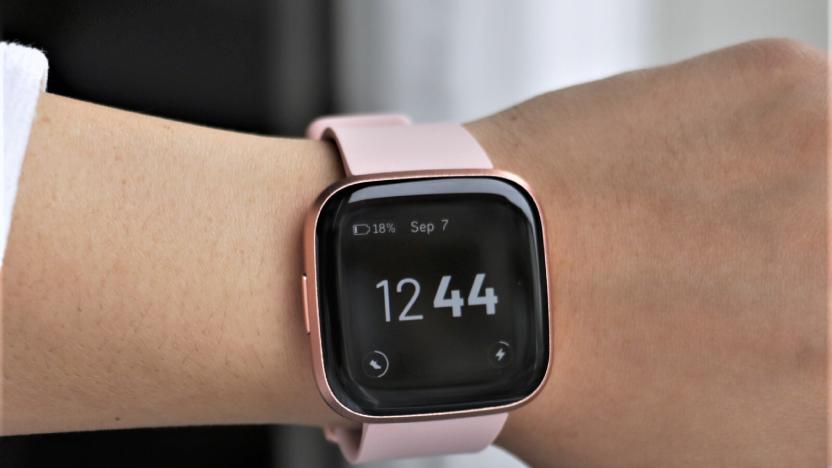
Fitbit quietly enables blood oxygen tracking on its wearables
Fitbit's devices from recent years have blood oxygen monitoring (SpO2) hardware, but they haven't used it -- until now. Users on Reddit and elsewhere have noticed that their Versa, Ionic and Charge 3 devices are suddenly (if sometimes temporarily) providing blood oxygen data to help track health issues like asthma, heart disease and sleep apnea. It's not clear who's getting first dibs, but it's not dictated by device type or Premium memberships.
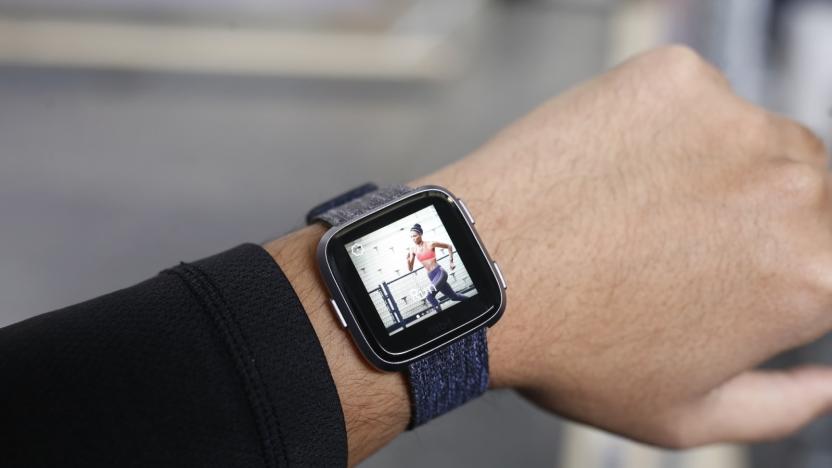
Fitbit's updated smartwatch OS provides more fitness info at a glance
You clearly buy a Fitbit smartwatch for its fitness tracking, and the company wants to be sure you wring the most out of that tentpole feature. It just released a Fitbit OS 3.0 update for the Ionic and Versa that provides both more fitness info and enables more powerful exercise apps. You'll see more health info at a glance, such as a more detailed exercise view (including hourly activity and heart rate) and sleep data. You can quickly log your water intake and weight, too. Fitbit is also introducing menstrual cycle trends in early 2019 to help women track their reproductive cycles more effectively.
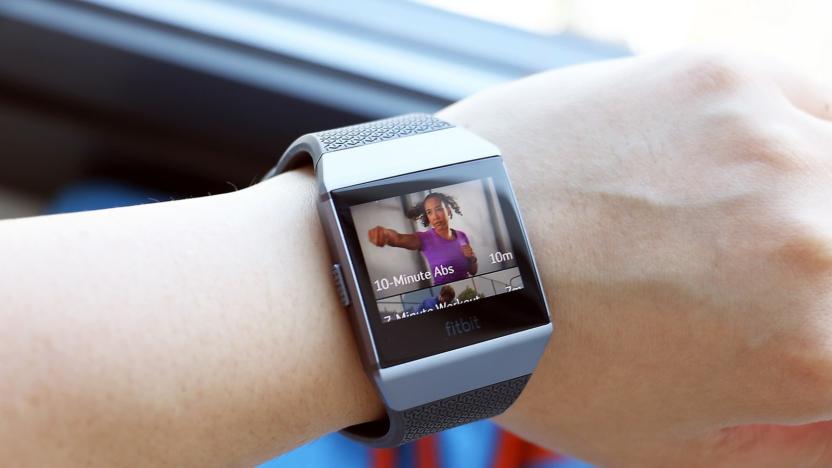
Fitbit plans a 'family' of smartwatches in 2018
Fitbit knows it can't lean on activity trackers forever, and it's going to shake things up in 2018. As part of a call discussing its latest earnings, the company said it would produce a "family" of smartwatches this year -- it's not just going to hope a single model like the Ionic will be enough. Details are unsurprisingly thin (this wasn't an announcement), but the aim is to produce smartwatches with "more mass appeal" while taking advantage of its core strengths in health and fitness. Don't be surprised if that translates to more aggressive pricing.
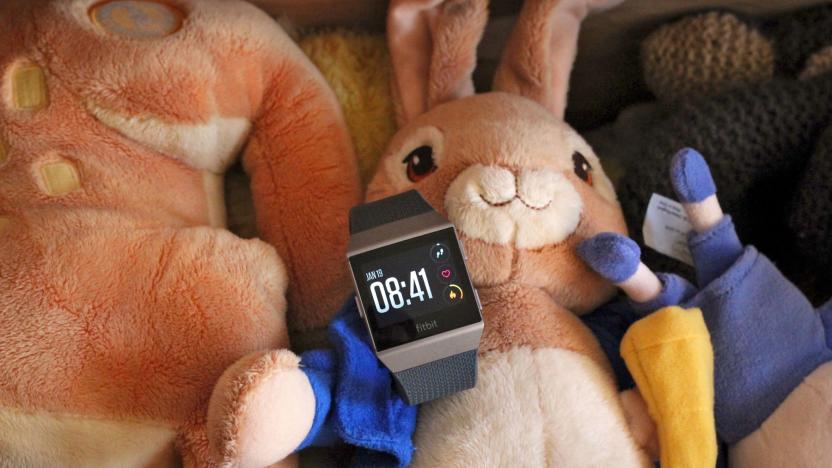
Fitbit Ionic is a great smartwatch for this new dad
Half a year back, my daughter suddenly stopped sleeping through the night, meaning that my wife and I stopped sleeping as well. No fancy bedroom gadget, or anything else, has alleviated the terrible fog that clouds our brains after an average of four hours' sleep. But there is one device that I've found myself clinging to in the last few months, something that's helping me get through the day in one piece. It's the Fitbit Ionic, and yes, I'm as surprised as you are.
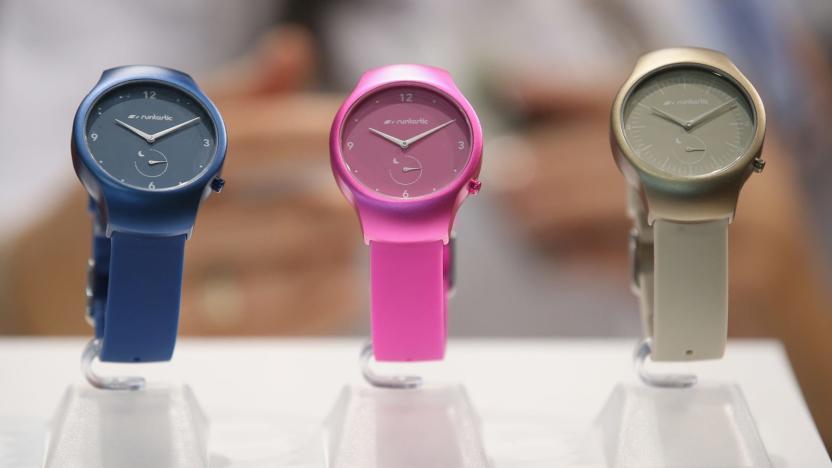
Adidas closes its digital sports division
Sportswear brands might be reviving their interest in fitness technology, but Adidas is staging its comeback in a very roundabout way. The company's American segment is closing its dedicated digital sports division and folding the group's work into "all areas" of its business. Just how this will affect Adidas' wearable tech strategy isn't clear, but reports suggest the brand is centering its efforts around Runtastic and its shopping app.
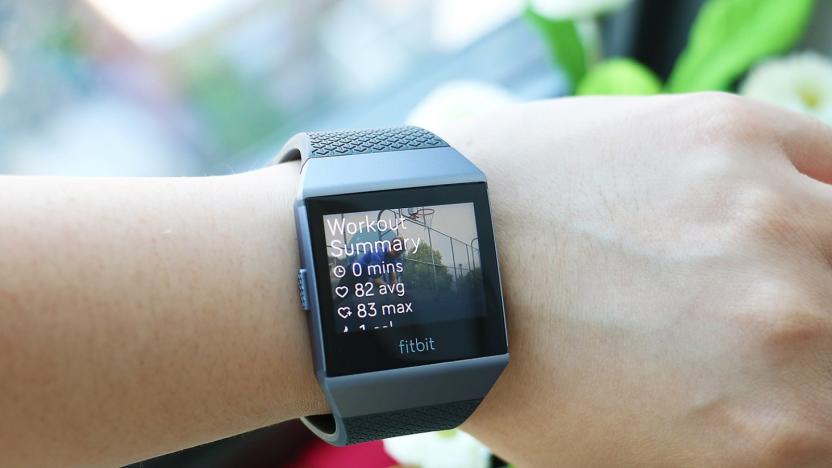
Fitbit's Ionic will let you play Deezer from your wrist
Fitbit's Ionic smartwatch suffers from a dearth of apps, we noted in our Engadget review, but the wearable firm is trying to flip that equation with an update to its Fitbit OS. It will bring over 100 new watch faces and 60 apps, including Yelp, Nest, Hue Lights and Flipboard. The most interesting one is Deezer, coming in 2018, as it will run on the Ionic without a smartphone, lightening the load for runners and other athletes. The company also launched Fitbit Labs, a new effort to create apps that motivate athlete behavior changes and accelerate Fitbit's pace of innovation.
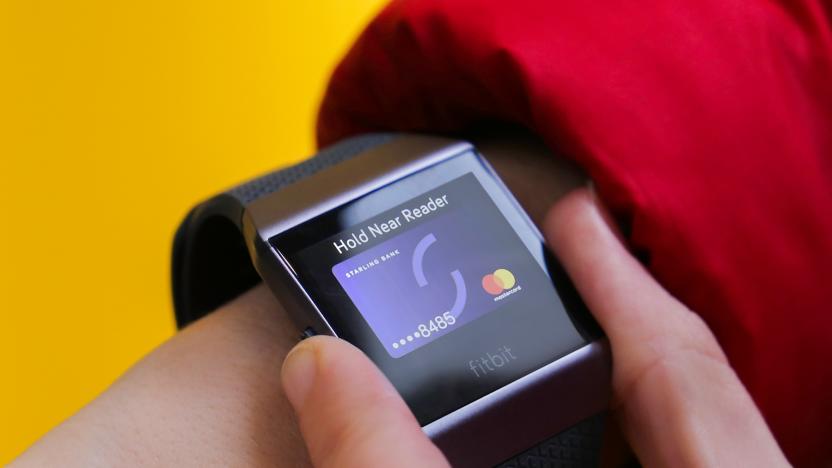
Fitbit's first smartwatch can now make payments in the UK
Convenient contactless and mobile payment options are a dime a dozen these days, but that isn't discouraging Fitbit from throwing its keys into the bowl. After launching in the US and elsewhere during recent weeks, Fitbit Pay is now live in the UK, if not with a few catches. For starters you're going to need one of Fitbit's new £300 Ionic smartwatches, the company's first wearable that isn't geared solely towards activity tracking. Then there's the fact that at launch, it only supports Starling Bank, one of the UK's relatively new, branchless outfits that digs into your payment data to help you better manage your money from your mobile.
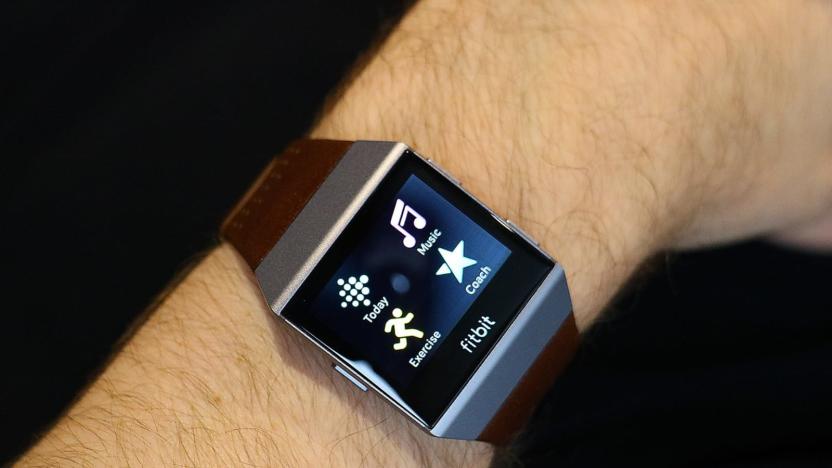
Fitbit's Ionic smartwatch arrives October 1st for $300
Fitbit's Ionic, the company's first smartwatch, will be available for purchase on October 1st. The watch sports a reported five-day battery life, sleep tracking, guided workouts and music playback via Pandora or Fitbit's Music app. The Ionic is priced at $300/£300 and comes in three color combinations -- silver gray with a blue-gray band, smoke gray with a charcoal band and burnt orange with a slate blue band. You'll also be able to pick up Classic and Sport accessory bands for $30/£25 apiece or leather bands for $60/£50 each. At the same time, Fitbit is also launching its first wireless headphone set -- the Flyer -- for $130/£110. You can snag them in lunar gray or nightfall blue.

IBM turns metal oxides into non-volatile chips through liquid currents
IBM is worried that we're reaching the end of the road for CMOS technology -- that we need new materials beyond silicon to keep the power draw down in chips as their performance goes up. It may keep future circuitry extra-lean through a new technique that puts a metal oxide in silicon's place and allows for non-volatile processors and memory. By running ionized liquid electrolytes in currents through the oxide, the company can switch that oxide from an insulator to a conductor (and vice versa) that can reliably maintain its state, even when there's no power. The trick would let a logic gate or switch kick into action only when there's an event, rather than needing constant jolts of electricity -- and without the pressure or temperature changes that had ruled out metal oxides for chips in the past. We're still far from replacing silicon with more efficient oxides given the early state of IBM's work, but having a consistent method is an important first step.

Microbial fuel cell produces hydrogen from wastewater without wasting energy
Back in 2005, Bruce Logan and his team of Penn State researchers developed a microbial fuel cell capable of converting poop into power. Now, Logan has refined his system to the point where it can produce hydrogen from wastewater or biodegradable organic materials without using a drop of grid electricity, and without emitting even a hint of carbon dioxide. His approach, outlined in the September 19th issue of the Proceedings of the National Academy of Sciences, involves something known as reverse-electrodialysis (RED) -- a process that harvests energy from the ionic discrepancy between fresh and salt water. Logan's bacterial hydrolysis cell (pictured left) features a so-called RED stack that's comprised of alternating positive and negative ion exchange membranes, which it uses to split water molecules into hydrogen and oxygen. Normally, this process would involve about 25 pairs of membranes, but by using RED technology in conjunction with electricity-producing exoelectrogenic bacteria, Penn State's team was able to extract hydrogen with just five membrane pairs. All told, Logan's cells proved to be about 58 to 64 percent energy efficient, while producing between 0.8 to 1.6 cubic meters of hydrogen for every cubic meter of liquid that passed through the system. The researchers' results show that only one percent of that energy was used to pump water through the cells, which are completely carbon neutral, as well. According to Logan, this breakthrough demonstrates that "pure hydrogen gas can efficiently be produced from virtually limitless supplies of seawater and river water and biodegradable organic matter." Somewhere, the US Navy is taking scrupulous notes. Full PR after the break. [Image courtesy of Penn State / Bruce Logan]

Ionic cooling system adapted for laptop use, scalded legs cautiously rejoice
To be totally candid, we can't even utter the word "ionic" without thinking of Sharper Image, but the concept here actually seems like one that just might benefit the public at large... or at least those of us forced to cook our upper legs on a daily basis. San Jose-based Tessera, in cooperation with the University of Washington, has adapted an ionic cooling system for use in everyday laptops. The magic elixir consists of two electrodes, one of which is used to ionize air molecules such as nitrogen, while the other acts as a receiver for those molecules. According to reports, this method can extract around 30 percent more heat from a lap burner than the traditional "fan and more fans" approach. Still, a major obstacle remains in terms of ensuring that the electrodes remain reliable throughout the life of a laptop, but if Tessera has its druthers, some form of the system will be commercialized next year.







